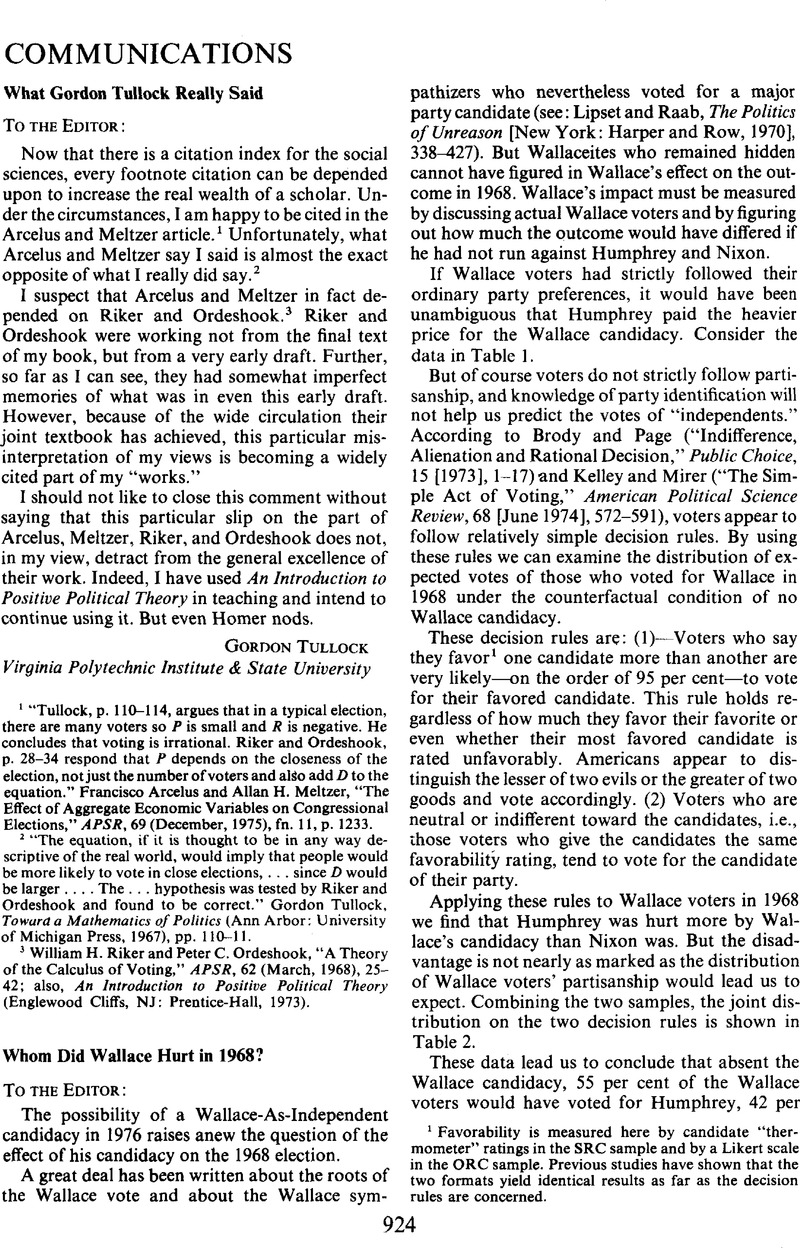No CrossRef data available.
Article contents
What Gordon Tullock Really Said
Published online by Cambridge University Press: 01 August 2014
Abstract

- Type
- Communications
- Information
- Copyright
- Copyright © American Political Science Association 1976
References
1 “Tullock, p. 110–114, argues that in a typical election, there are many voters so P is small and R is negative. He concludes that voting is irrational. Riker and Ordeshook, p. 28–34 respond that P depends on the closeness of the election, not just the number of voters and also add D to the equation.” Arcelus, Francisco and Meltzer, Allan H., “The Effect of Aggregate Economic Variables on Congressional Elections,” APSR, 69 (12, 1975), fn. 11, p. 1233Google Scholar.
2 The equation, if it is thought to be in any way descriptive of the real world, would imply that people would be more likely to vote in close elections, … since D would be larger …. The … hypothesis was tested by Riker and Ordeshook and found to be correct.” Tullock, Gordon, Toward a Mathematics of Politics (Ann Arbor: University of Michigan Press, 1967), pp. 110–11Google Scholar.
3 Riker, William H. and Ordeshook, Peter C., “A Theory of the Calculus of Voting,” APSR, 62 (03, 1968), 25–42CrossRefGoogle Scholar; also, An Introduction to Positive Political Theory (Englewood Cliffs, NJ: Prentice-Hall, 1973)Google Scholar.





Comments
No Comments have been published for this article.